Sitting Bull Facts
The man who was known as Sitting Bull was originally known as Tatanka Yotanka, which describes a bull sitting on its haunches. Even as a young man, Sitting Bull was recognized for his courage! He was seen as being as immovable as a bull. Again and again, Sitting Bull lived up to that image.
Sitting Bull was a Hunkpapa Lakota leader who played a significant role in the resistance against the United States government’s encroachment on Native American land. He led his people in battles against General Custer and was a prominent figure in the Ghost Dance movement. Sitting Bull’s legacy as a warrior and advocate for Native American rights continues to inspire and inform contemporary Indigenous activism.
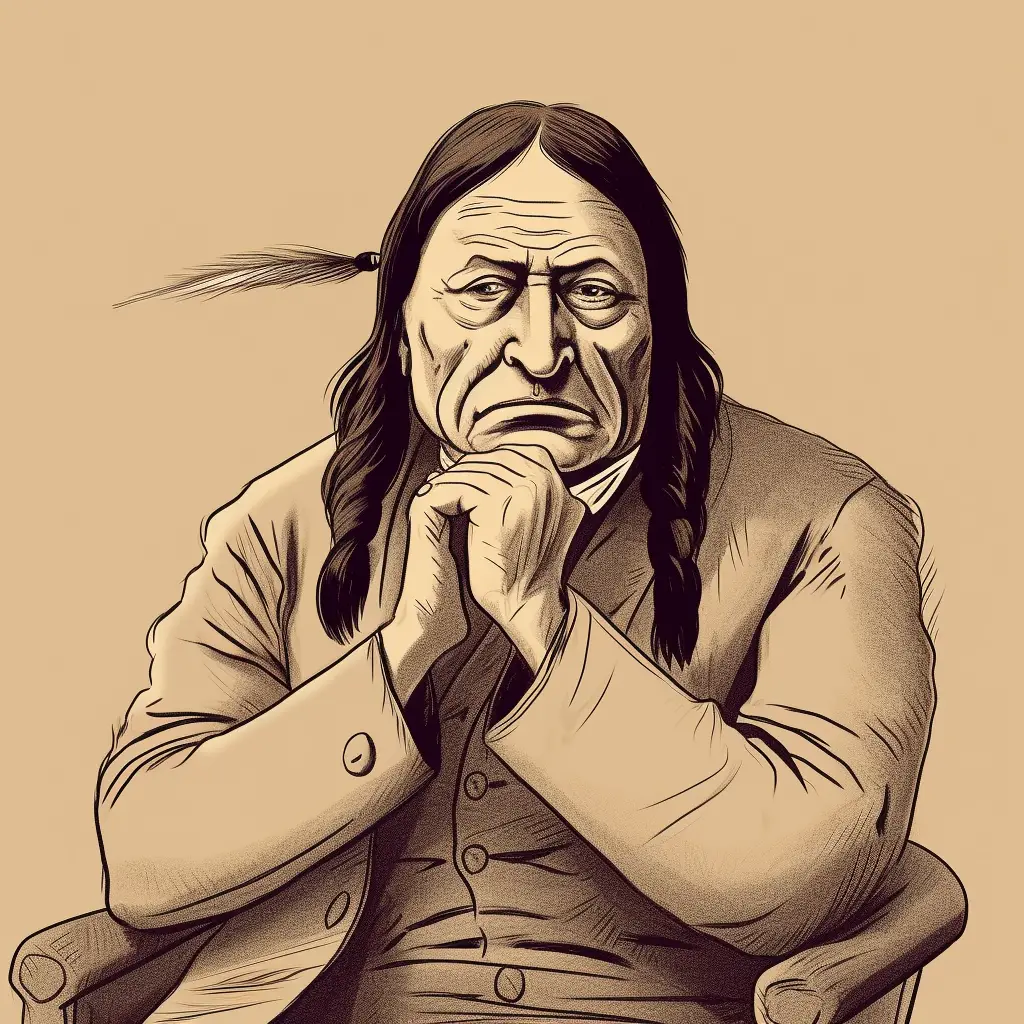
Sitting Bull Facts for Kids
- Sitting Bull was a leader of the Hunkpapa Lakota Sioux Tribe.
- He was born around 1831 near the Grand River in South Dakota.
- His Sioux name, Tatanka Iyotake, means “Buffalo Bull Who Sits Down”.
- He became a chief at the age of 24.
- Sitting Bull helped defeat Custer’s army at Little Bighorn.
- He traveled with Buffalo Bill’s Wild West Show for a while.
- Sitting Bull believed in peaceful negotiations with U.S. officials.
- He had a vision predicting the victory at Little Bighorn.
- Sitting Bull was killed in 1890 during an arrest attempt.
- He’s remembered as a symbol of Native American resistance.
Battle of Little Bighorn
Sitting Bull, spiritual leader of the Hunkpapa Lakota Sioux, had a pivotal role in the Battle of Little Bighorn in 1876. Before the battle, he had a prophetic vision of a Sioux victory against the U.S. Army. This vision galvanized his people, preparing them for the imminent conflict with General Custer’s Seventh Cavalry. The Sioux were victorious, marking a major win in the American Indian Wars and strengthening Sitting Bull’s legacy as a symbol of Native American resistance.
Sioux Tribe (Lakota, Dakota, Nakota)
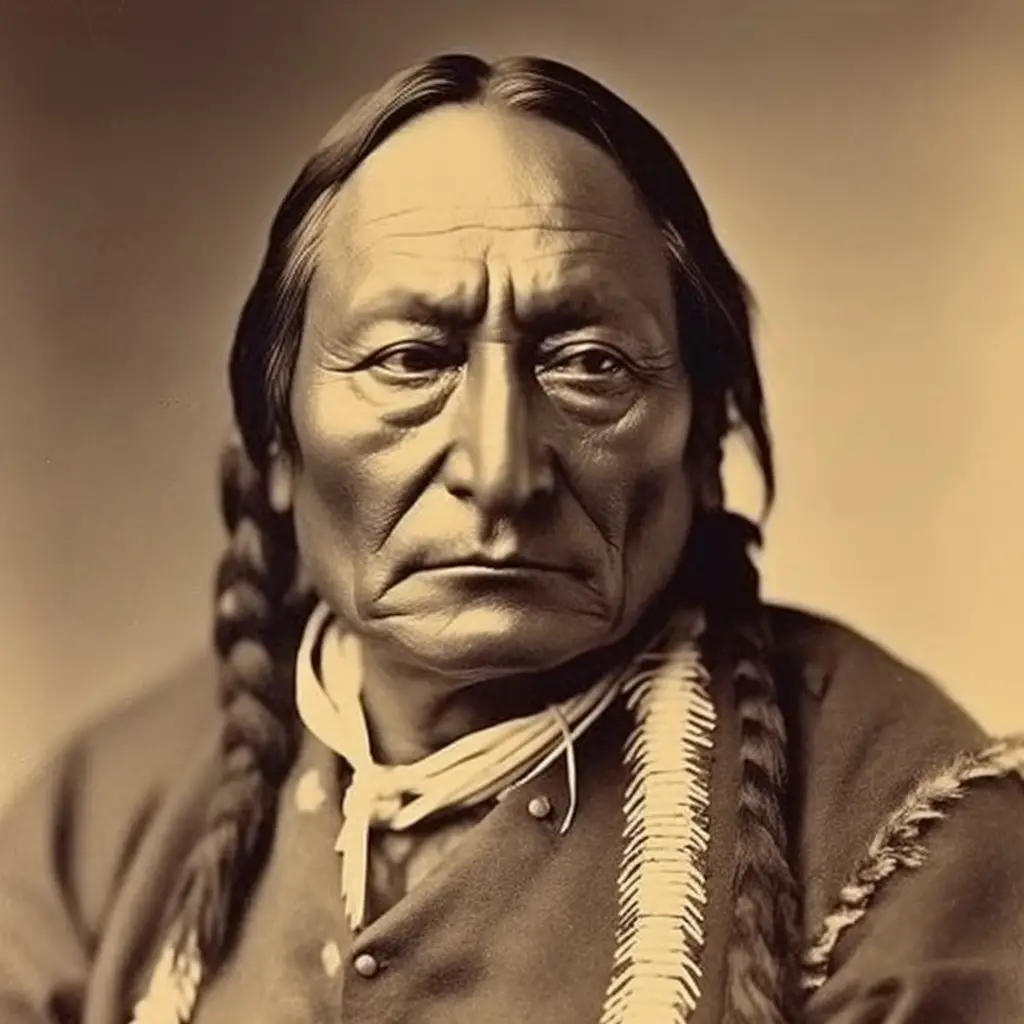
As a prominent leader of the Sioux Nation, specifically, the Hunkpapa Lakota tribe, was born around 1831 near South Dakota’s Grand River. Renowned for his bravery, wisdom, and spiritual insights, he fiercely defended Sioux’s way of life in the face of encroaching American settlers. Sitting Bull symbolized the collective strength and resilience of the Lakota, Dakota, and Nakota tribes within the broader Sioux Nation. His enduring legacy continues to inspire Native Americans, serving as a powerful reminder of their ongoing struggle for rights and sovereignty.
Native American Resistance
He symbolizes Native American resistance against colonial oppression. As a Hunkpapa Lakota Sioux leader, he defended his people’s rights during the late 19th century’s Great Sioux Wars, including the Battle of Little Bighorn. Guided by spiritual visions, Sitting Bull inspired indigenous warriors to unite against the U.S. government’s invasive policies. His enduring legacy continues to inform and galvanize indigenous communities as they fight for their rights and self-determination.
General George Custer
Sitting Bull’s involvement in General George Custer’s defeat showcases his commitment to Native American sovereignty. As a leader in the Great Sioux Wars, he played a crucial role in the Battle of Little Bighorn against Custer’s Seventh Cavalry. His spiritual guidance and tactical skill contributed to the victory, bolstering the cause of Native American resistance. However, the victory was temporary and led to increased U.S. military efforts to subdue resistant tribes, ultimately benefiting American settlers.
American Indian Wars
Sitting Bull’s leadership in the American Indian Wars exemplifies Native American resilience during efforts to disenfranchise them. As a key figure in conflicts like the Great Sioux Wars and the Battle of Little Bighorn, he fought for indigenous autonomy, land rights, and cultural preservation. Despite the eventual forced relocation of many tribes to reservations, Sitting Bull’s enduring defense of Native American rights carries historical significance in indigenous resistance against colonization and cultural erasure.
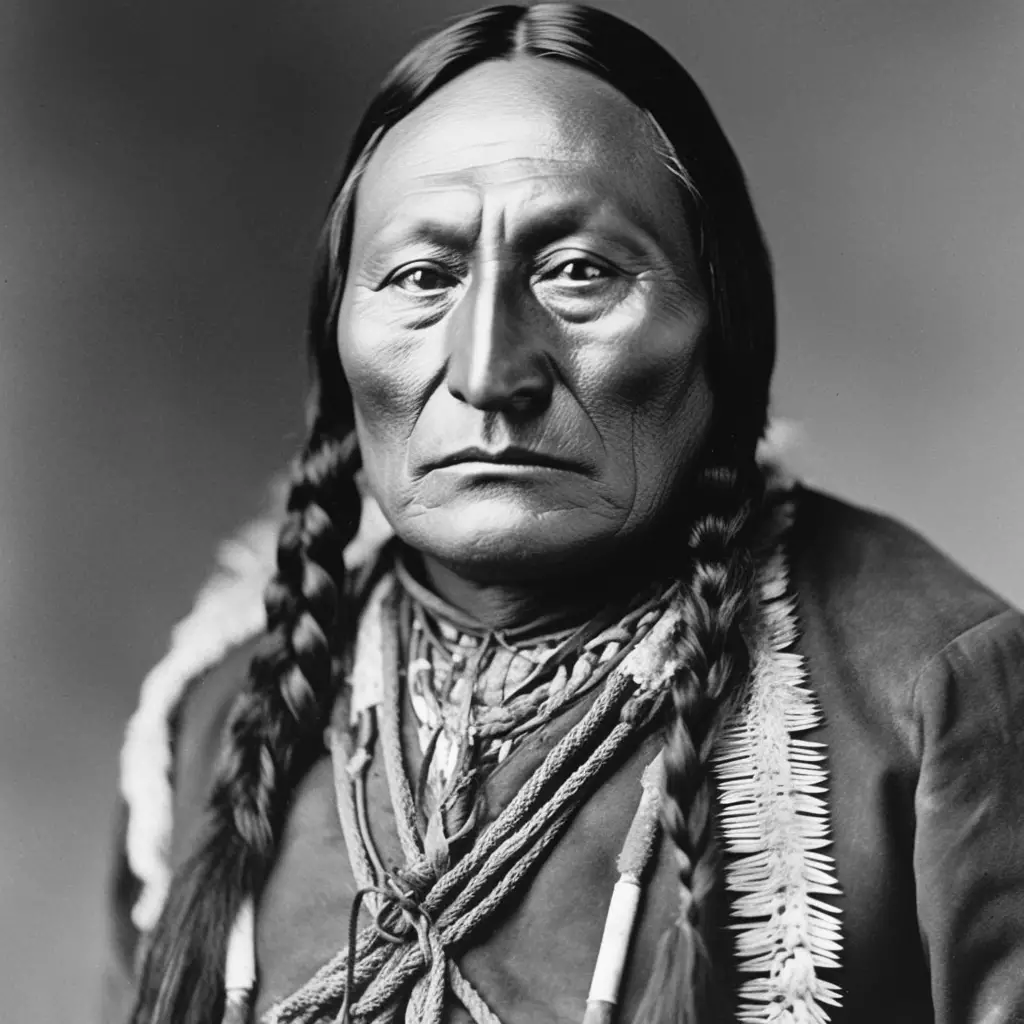
Buffalo Bill’s Wild West Show
Sitting Bull’s participation in Buffalo Bill’s Wild West Show highlights the challenges faced by Native American leaders adapting to a changing cultural landscape. Joining the show in 1885, he saw it as a way to earn a living and promote unity between Native Americans and white settlers. Despite criticism, Sitting Bull used his celebrity status to advocate for his people’s welfare and raise awareness of injustices. His involvement demonstrates his dedication to a better future for his people amid cultural clashes and eroding traditions.
Native American Spirituality and Visions
Sitting Bull’s connection to Native American spirituality and visions significantly influenced his leadership. As a medicine man, he experienced powerful visions during sacred rituals, like the Sun Dance ceremony. One such vision foretold a victory at the Battle of Little Bighorn, inspiring unity and confidence among his people. Sitting Bull’s spirituality emphasized interconnectedness and harmony with nature, shaping his determination to defend indigenous sovereignty, land rights, and cultural integrity, and impacting the broader struggle for Native American resistance.
Wounded Knee Massacre
Sitting Bull’s death preceded the Wounded Knee Massacre, highlighting the volatility surrounding Native American rights and U.S. suppression of indigenous resistance. His death in December 1890 during an arrest attempt intensified fear and hostility, leading to the massacre two weeks later, where U.S. troops killed over 250 Lakota Sioux. The massacre marked a tragic end to the American Indian Wars and a devastating blow to indigenous self-determination. Sitting Bull’s link to these events serves as a reminder of the high cost of Native American resistance in their struggle for land, rights, and cultural preservation.
Indian Reservation System
Sitting Bull’s experiences with the Indian Reservation System highlight the challenges faced by many Native Americans in the 19th century. The reservation system was established to control and confine indigenous populations as the U.S. expanded westward. Sitting Bull resisted enforced relocation to reservations, eventually seeking refuge in Canada before returning to the Standing Rock Reservation in 1881. Despite challenges like food shortages and cultural suppression, he continued to champion Native American rights and advocate for better living conditions and opportunities for his people.
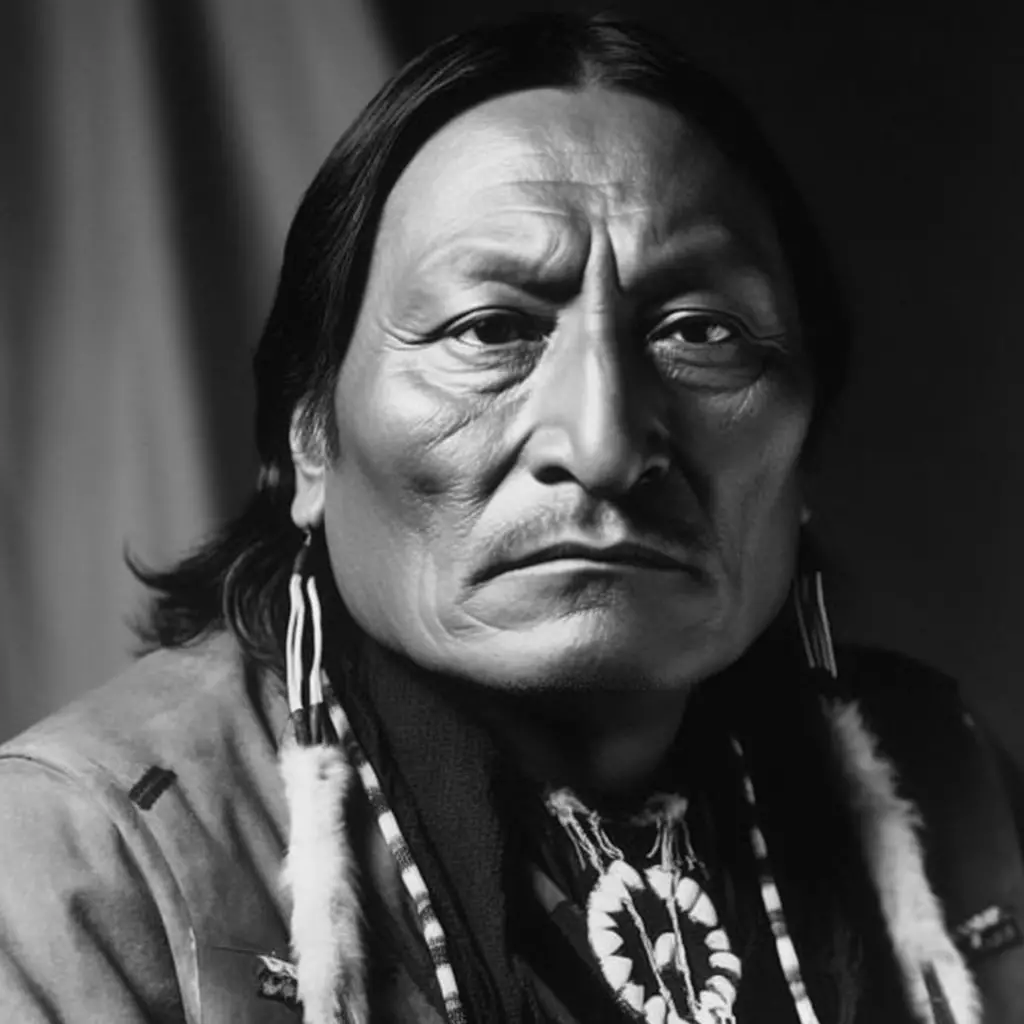
U.S. Westward Expansion
Sitting Bull’s resistance against U.S. westward expansion highlights the struggle of Native Americans facing colonization and displacement. As the government pursued territorial acquisition, indigenous tribes like the Hunkpapa Lakota Sioux were marginalized and dispossessed. Sitting Bull’s leadership in fights such as Little Bighorn challenged the American narrative of progress and depicted its tragic consequences for native populations. His life and legacy serve as a powerful reminder of the darker side of westward expansion and symbolize indigenous determination to preserve their rights, culture, and identity amid the transformation.
White Bull
Sitting Bull’s relationship with his nephew, White Bull, highlights the strong familial and tribal bonds in Native American resistance. Influenced by his uncle’s leadership, White Bull became an accomplished Lakota warrior, participating in battles like Little Bighorn. This mentorship demonstrates how native resistance was rooted in resilience and courage within indigenous families and communities, revealing the deeply personal commitment to preserving their culture, land, and way of life for future generations.
Jumping Bull
Sitting Bull’s connection to Jumping Bull, his father, highlights the importance of intergenerational relationships in Native American communities. Sitting Bull learned traditional practices, values, and wisdom from his father, a respected tribal leader. This foundation shaped Sitting Bull’s leadership qualities, including bravery and commitment to his people.
Their bond emphasizes the significance of preserving indigenous cultures through passing knowledge between generations, shaping the trajectory of Native American resistance and the role of familial connections in safeguarding the future of indigenous peoples.
Fort Buford
Sitting Bull’s surrender at Fort Buford in 1881 marked a turning point in the struggle for Indigenous sovereignty during U.S. westward expansion. Returning from exile in Canada due to dwindling resources, he surrendered to secure his tribe’s safety and future. Though this ended his armed resistance, Sitting Bull continued advocating for Indigenous rights and dignity on the Standing Rock Reservation, working tirelessly to uphold his people’s values, traditions, and interests under oppressive circumstances.
The Early Life and Leadership of Sitting Bull
He was born into the Lakota (a Sioux tribe) tribe in 1831, in present-day South Dakota. As early as age fourteen, Sitting Bull was a warrior. He often fought both other Native American tribes and American soldiers. After a battle with American soldiers at Killdeer Mountain in 1864, Sitting Bull became determined to keep his people away from white people. He was also determined to never sign a treaty which would force his people to live on a reservation. Because he was known for his bravery, Sitting Bull became head chief of the Lakota nation in about 1868.
Unyielding Courage in the Face of Battle
His courage was legendary even in his lifetime. Once, during a battle with soldiers near the Yellowstone River, Sitting Bull and several other warriors calmly walked onto the battlefield, sat, and smoked a pipe while bullets whizzed around them! When they finished, they simply walked away.
Defending Sacred Land Against Settler Expansion
In 1874, gold was discovered in the Black Hills of South Dakota. The area was sacred to many tribes and was off-limits to white settlement. Once the word got out that gold had been discovered, white settlers and prospectors began pouring into the Black Hills area. This led to conflicts, as the Lakota attempted to defend their land. T
he US government attempted to buy the Black Hills, but the Lakota refused. The government then announced that the Lakota must be removed to a reservation by the end of January, 1876. If they did not go, they would be considered hostile. Some Sioux chiefs, such as Red Cloud, signed treaties and agreed to be moved to a reservation. Sitting Bull, however, was true to his name and he and his people refused to be moved.

Mystical Visions and Sacred Rituals: Sitting Bull’s Spiritual Connection
He was also a holy man who had mystical visions. Along Rosebud Creek, Sitting Bull led Lakota, Cheyenne, and Arapaho in ancient rituals. He even slashed his arms one hundred times as a sign of sacrifice! As part of the rituals, Sitting Bull had a vision that involved soldiers falling out of the sky into the Lakota camp.
Sitting Bull was inspired by his vision. He and the Oglala Lakota war chief, Crazy Horse, set out with five hundred warriors and defeated American soldiers commanded by General George Crook. They then moved to Little Bighorn River. There they were attacked by soldiers under General George Custer, who was badly outnumbered. Just like Sitting Bull’s vision, the Americans were slaughtered. Every American soldier was killed, including General Custer. The battle at Little Bighorn is known as “Custer’s Last Stand.”
The Last Stand
Four years later, Sitting Bull was forced to surrender. He reportedly said, “I wish it to be remembered that I was the last man of my tribe to surrender my rifle.” After being held for several years as a prisoner of war, Sitting Bull was released. He joined Buffalo Bill’s Wild West show, but soon quit. The once proud chief could not stand to ride around for the entertainment of white people.
Sitting Bull died in 1890. He is still remembered and revered by the Lakota people for his fearlessness.
Things to Remember:
- Sitting Bull is responsible for one of the greatest Native American victories ever, at the Battle of Little Bighorn
- Sitting Bull was brave until the very end, saying “I wish it to be remembered that I was the last man of my tribe to surrender my rifle.”
- He was originally known as Tatanka Yotanka and was a courageous warrior from the Lakota tribe.
- He fiercely resisted white settlement and refused to sign treaties that would force his people onto reservations.
- His mystical visions guided his actions, including his victorious battles against American soldiers, such as at Little Bighorn.
- He was the last to surrender his rifle, emphasizing his unwavering commitment to his people’s sovereignty.
- Sitting Bull’s legacy as a symbol of bravery and resistance continues to inspire Indigenous communities today.
What was Sitting Bull’s real name?
Sitting Bull’s real name was Tatanka-Iyotanka, which translates to “Buffalo Bull Who Sits Down” in the Lakota language. He was a Hunkpapa Lakota Sioux holy man and war chief who led his people in resistance against the United States government’s encroachment on their land and way of life in the late 19th century. Sitting Bull remains a revered figure in Native American history and culture.
What tribe did Sitting Bull belong to?
Sitting Bull was a member of the Hunkpapa Lakota tribe, which was one of the seven bands of the Lakota people. He was born in what is now South Dakota in 1831 and became a prominent leader and warrior, known for his resistance against the encroachment of white settlers on Lakota lands.
When was Sitting Bull born?
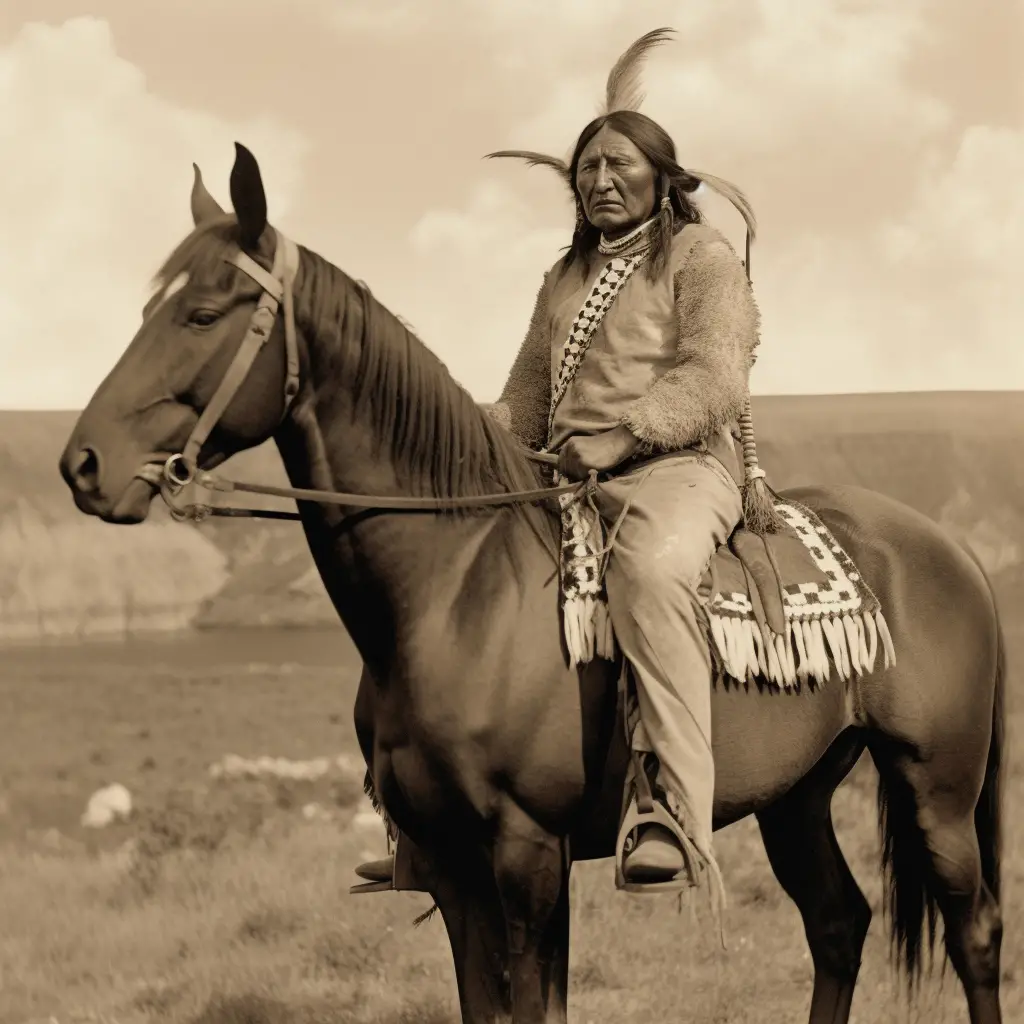
Sitting Bull was born in 1831 near the Grand River in present-day South Dakota. He was a member of the Hunkpapa Lakota Sioux tribe and became a respected leader and warrior. Sitting Bull played a significant role in the resistance against the US government’s attempts to force Native Americans onto reservations, including leading the Sioux in the famous Battle of Little Bighorn in 1876. He was eventually killed in 1890 during a conflict with Indian agency police.
When did Sitting Bull die?
Sitting Bull, a Hunkpapa Lakota Sioux leader, died on December 15, 1890, in Grand River, South Dakota. He was killed during a confrontation with Indian agency police who were attempting to arrest him. Sitting Bull is remembered as a powerful and influential figure in Native American history, known for his resistance against the encroachment of white settlers on indigenous lands.
What was Sitting Bull’s most famous battle?
Sitting Bull’s most renowned battle was the Battle of Little Bighorn in June 1876. This conflict pitted a force of Lakota and Northern Cheyenne Native Americans led by Sitting Bull against the United States 7th Cavalry Regiment commanded by George Armstrong Custer. The Native-American coalition emerged victorious, with casualties on both sides resulting in a significant number of deaths. In the aftermath, Sitting Bull became widely acclaimed for his leadership and this battle heralded a turning point for Indigenous sovereignty.
Why was Sitting Bull killed?
Sitting Bull, a prominent Lakota Sioux leader, was killed on December 15, 1890 during a confrontation with Indian police attempting to arrest him. The incident occurred during a period of tension between the Sioux and the US government, with Sitting Bull being seen as a symbol of resistance. His death further escalated the conflict and contributed to the eventual massacre at Wounded Knee just two weeks later.
What was Sitting Bull’s role in the Ghost Dance movement?
Sitting Bull, a prominent Lakota Sioux leader, played a significant role in the Ghost Dance movement of the late 19th century. He saw the dance as a way to unite Native American tribes and resist the encroachment of white settlers. However, his involvement in the movement ultimately led to his arrest and death, as the US government viewed the Ghost Dance as a threat to their control over Native American populations.
What was Sitting Bull’s relationship with Buffalo Bill Cody?
Sitting Bull and Buffalo Bill Cody had a complicated relationship. While Cody admired Sitting Bull’s leadership and even hired him to perform in his Wild West Show, Sitting Bull saw Cody as a symbol of the white man’s oppression and exploitation of Native Americans. Despite their differences, they maintained a mutual respect and even shared a tent during their time on tour together.
How is Sitting Bull remembered today?
Sitting Bull is remembered today as a legendary Lakota Sioux warrior and chief who fiercely resisted the encroachment of white settlers on Native American lands. He is celebrated for his leadership in the Battle of Little Bighorn, where he and his warriors defeated General Custer’s troops. Sitting Bull’s legacy also includes his advocacy for Native American rights and his efforts to preserve Lakota culture and traditions. He remains an iconic figure in Native American history and a symbol of resistance against oppression.
What are some of the challenges that Sitting Bull faced as a leader?
As a leader, Sitting Bull faced numerous challenges, including navigating the complex relationships between various Native American tribes and the United States government, dealing with the encroachment of settlers on Native American land, and maintaining unity and cooperation among his own people. Despite these challenges, Sitting Bull remained a respected and influential leader among his people until his death in 1890.



